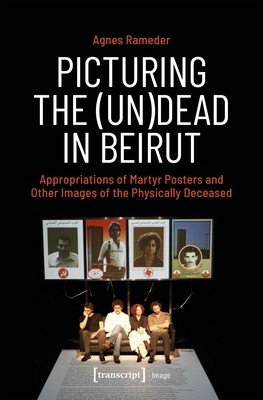
- We will send in 10–14 business days.
- Author: Agnes Rameder
- Publisher: Transcript Publishing
- ISBN-10: 3837675394
- ISBN-13: 9783837675399
- Format: 15.2 x 22.9 x 2.2 cm, minkšti viršeliai
- Language: English
- SAVE -10% with code: EXTRA
Reviews
Description
Martyr posters are more than obituary images - they can act as visual politics. Focusing on Rabih Mroué's play How Nancy Wished That Everything Was an April Fool's Joke (2007), Agnes Rameder analyses how contemporary artists question and appropriate Lebanese martyr posters. By linking the posters from the Wars in Lebanon (1975-1990) to contemporary posters, she shows that these images continue to the present day, that martyrs are still created and that deaths, such as those who were killed in the explosion on 4 August 2020, are still visually remembered. This study does not focus on how such pictures are perceived by a Western audience but delves into the use and abuse of martyr posters that were intended to be shown to the Lebanese.
EXTRA 10 % discount with code: EXTRA
The promotion ends in 22d.09:05:34
The discount code is valid when purchasing from 10 €. Discounts do not stack.
- Author: Agnes Rameder
- Publisher: Transcript Publishing
- ISBN-10: 3837675394
- ISBN-13: 9783837675399
- Format: 15.2 x 22.9 x 2.2 cm, minkšti viršeliai
- Language: English English
Martyr posters are more than obituary images - they can act as visual politics. Focusing on Rabih Mroué's play How Nancy Wished That Everything Was an April Fool's Joke (2007), Agnes Rameder analyses how contemporary artists question and appropriate Lebanese martyr posters. By linking the posters from the Wars in Lebanon (1975-1990) to contemporary posters, she shows that these images continue to the present day, that martyrs are still created and that deaths, such as those who were killed in the explosion on 4 August 2020, are still visually remembered. This study does not focus on how such pictures are perceived by a Western audience but delves into the use and abuse of martyr posters that were intended to be shown to the Lebanese.


Reviews